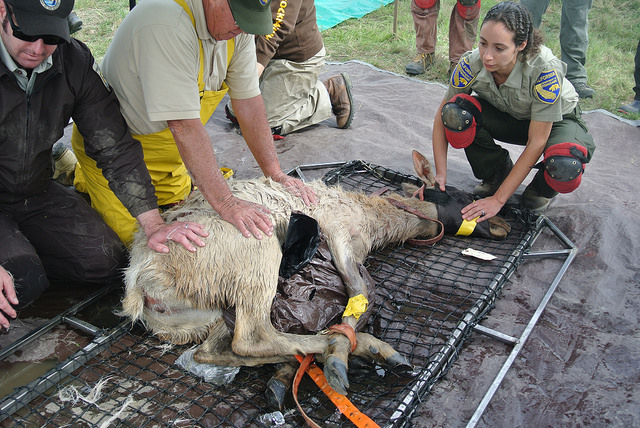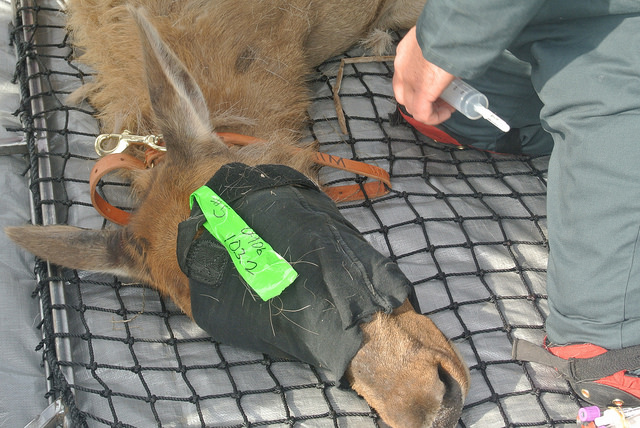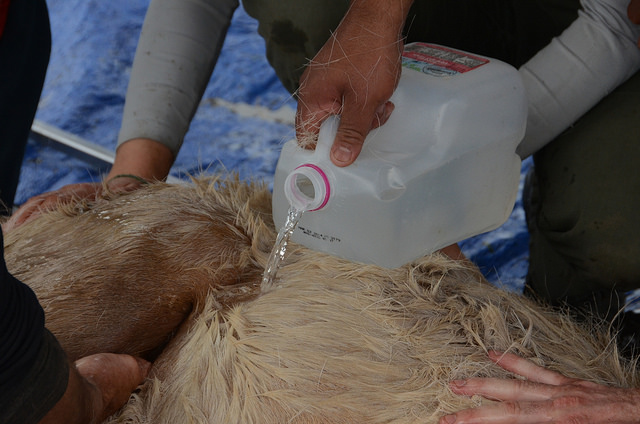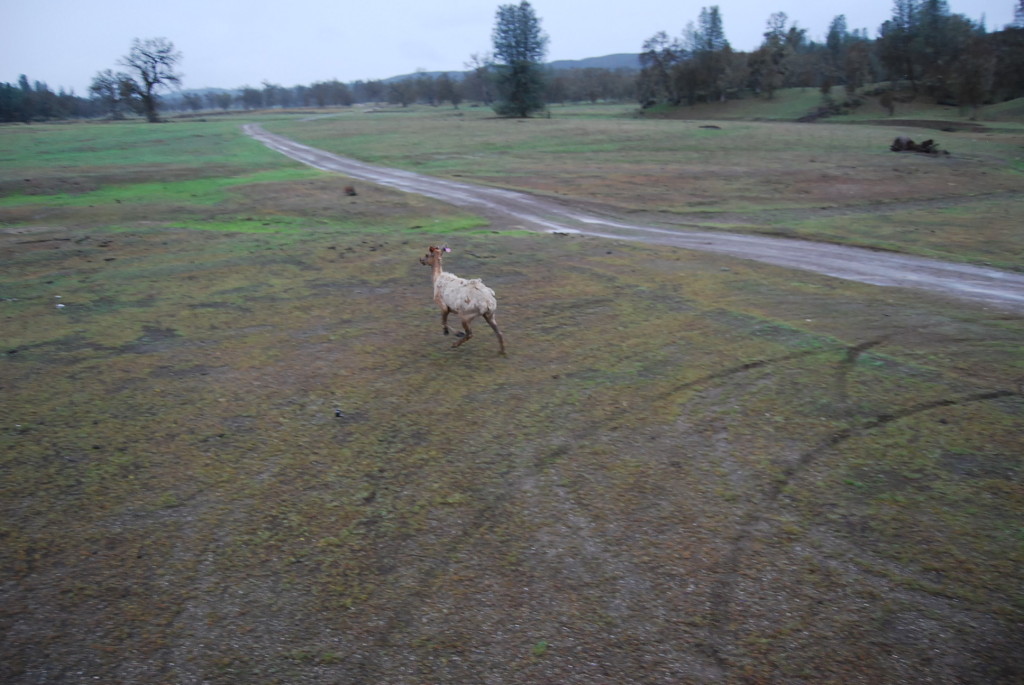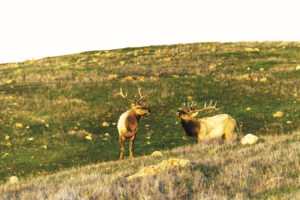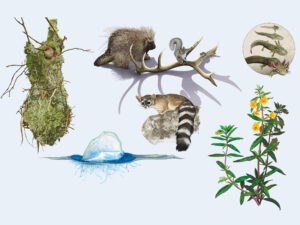It’s spring and tule elk are on the move in Santa Clara County. It’s not a migration, though. Instead, a herd in the San Antonio Valley Ecological Preserve is expanding with the help of wildlife experts, some sturdy trailers, and a relocation plan for excess elk in the San Luis National Wildlife Refuge in Los Banos.
Although moving can be a stressful under any circumstances — for man or beast — the fact that there are too many tule elk anywhere in California is cause for celebration. Not so long ago, there were almost too few of these native elk to count.
These animals take up a lot of room,” said Joe Hobbs, a senior environmental scientist for the the California Department of Fish and Wildlife (CDFW). “Although it’s a big state, it also has a large population (of people). When an animal that big goes from the brink of extinction to living on the landscape in herds, it’s a huge achievement.”
A half million tule elk, native only to California, once roamed from Mendocino to the Tehachapi Mountains near Bakersfield. Hobbs said the “homegrown elk” are the smallest of the three subspecies found in the state, weighing anywhere from 400-pound cows to the beefier, 1,000-pound bulls. (The other two subspecies that can be found in California are the Roosevelt, which ranges along the coastal Pacific Northwest, and the Rocky Mountain elk found in northeasterly areas.)
But when the Gold Coast population spiked in the mid-1800s, tule elk were almost hunted and pushed out of existence. Oddly enough, the remaining elk were spared largely through the conservation efforts started by cattle baron Henry Miller, who took a liking to them despite draining prime foraging areas of marshland to make way for profitable farmland.
Now, about 4,200 of the iconic elk roam around California. By CDFW accounts, there are 22 herds grazing on state-run preserves and national parks. But the elk have shown no reverence for fence lines or private property.
“They’ll go wherever they want,” said Hobbs.
So, over the years, herds have been shuffled around the state to maintain good relations between the elk and ranchers. At least 1,500 of the roaming ruminants have been relocated since 1975, according to CDFW records. Even Miller — the man who lobbied so hard to save the species — reportedly removed tule elk from his ranch lands to preserve his property from their trampling ways.
The most recent reshuffling of elk herds happened at the end of March. For two long days, teams that included wildlife workers from the CDFW and the U.S. Fish and Wildlife Service used helicopters, nets, and on-their-feet expertise to capture 15 bulls, 16 cows, and five calves on the Los Banos reserve.
Before the animals were trailered to new grazing grounds, biologists recorded body weights and collected samples of blood, hair, skin, and teeth. Among other things, that data is used to monitor herd health and analyze DNA for evidence of interbreeding. Then the animals were trucked to one of three areas within a reasonable driving distance: the San Antonio Valley Ecological Reserve in Santa Clara County (north of Mount Hamilton), the Carrizo Plains Ecological Reserve in San Luis Obispo County, and the Wind Wolves Preserve in Kern County.
We try to spread the elk around,” said Hobbs. “Before their numbers went up, we were down to a handful of animals, so genetic diversity was really low to start with. If we let herds continue to grow in isolation, it would cause increasing genetic loss.”

It’s no surprise that moving the elk is a huge logistical challenge. To tip the odds in their favor, wildlife managers schedule such events for the cooler winter months, after the bulls have shed their antlers and before most cows have calves. Younger elk, between one to three years of age, are targeted because they’re easier to integrate into existing herds.
Nine bulls were delivered to San Antonio Valley, a 3,000-acre preserve on the eastern edge of the Henry W. Coe State Park. They’ll mingle with an existing herd of about 150 tule elk that were reintroduced to the area a few decades ago. As part of a smaller herd, the new bulls will have an easier time getting enough to eat, despite drought conditions that have made it harder for grazing animals to find good forage.
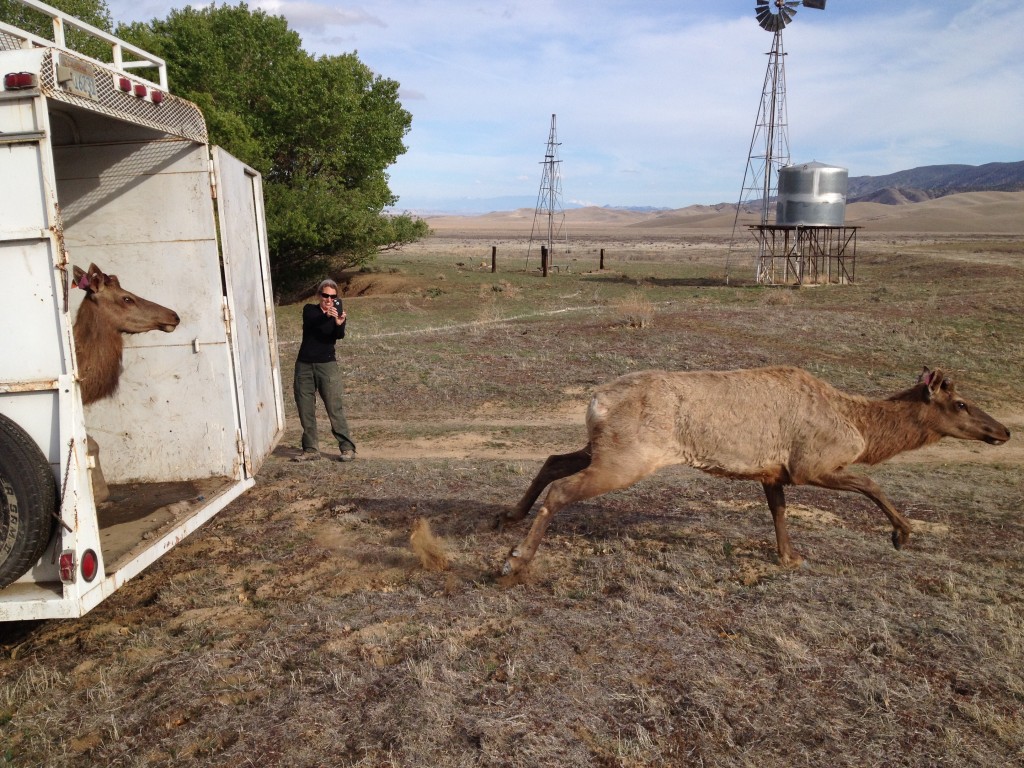
Now that the number of tule elk are on the upswing, Hobbs said the state is developing a new management plan for the animals. Mountain lions and coyotes don’t keep the population in check. While wild elk might only make it to their early teens, cows leading less stressful lives on managed lands can live into their early 20’s and produce a calf every year. Although birth control has been tested in some herds, it’s not a foolproof method. Most herds are now managed by relocation or culling with a set number of hunting licenses allocated each year, depending on the population and location.
But culling and relocation options don’t exist for managing all the tule elk herds. The animals in the 500-plus herd at Point Reyes have to stay put. There, a microscopic predator that causes chronic wasting, called Johne’s disease, prohibits any of the elk from being shipped outside the area. The tiny foe, the Mycobacterium avium ss. paratuberculosis, infects the intestinal lining of cattle and other ruminants such as elk, deer, and sheep. The hardy bacteria is shed in manure and then can persist in the soil for years. Even though the disease was discovered in cattle more than a century ago, there is still no cure for it. So no one wants to risk moving the disease around the state along with the elk.
Still, the success story is the fact that tule elk remain in Central California, said Hobbs. Now the goal is to keep the herds going and minimize conflict wherever they roam.
San Antonio Valley Ecological Preserve is not open to the public except for special events. The San Luis National Wildlife Refuge in Los Banos is open year-round and tule elk can be seen via the auto-tour route.Tule elk can also be viewed at CDFW’s Grizzly Island Wildlife Area, the Tupman Tule Elk State Preserve, and Point Reyes National Seashore.

